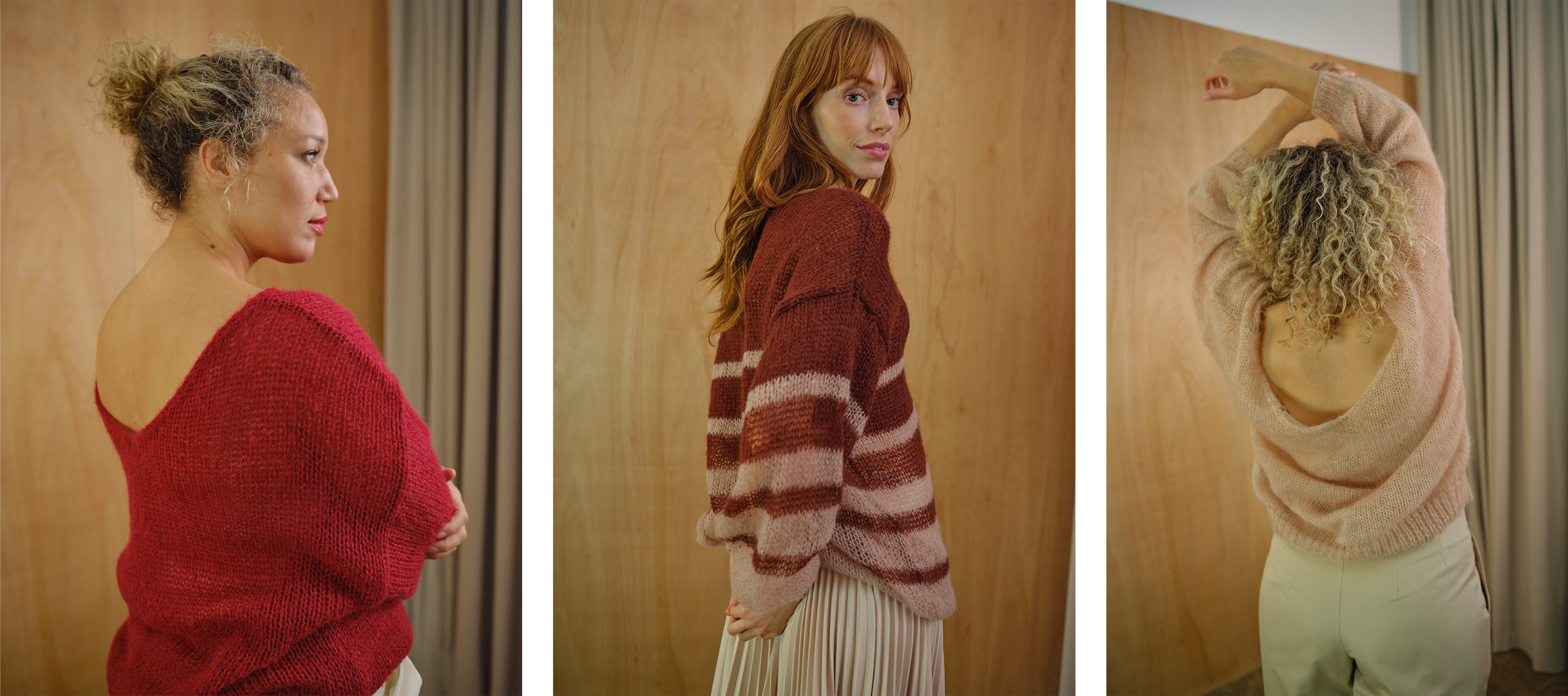From Farm to Fashion: Everything You Need to Know About Mohair Fibres


When you think of luxurious, sustainable fibres, mohair should be at the top of your list. Known for its lustrous sheen, exceptional softness, and eco-friendly qualities, this natural fibre is a favourite in high-end knitwear. But what makes mohair so special? Here’s everything you need to know about this luxurious, sustainable fibre—from its origins on the farm to its place in your wardrobe.
What is Mohair?
Mohair is the fibre produced by the Angora goat, originally native to Turkey but now found in several countries with suitable climates, including South Africa and the United States. The goats are sheared annually to harvest their beautiful, silky coats, which are then spun into yarn or fabric. Historically, mohair was often referred to as the "diamond fibre" due to its unique combination of luxury, shine, and rarity. This nickname reflects the extraordinary qualities of the fibre, as well as its significant value in the fashion and textile industries.
Unlike wool, which can be prickly and heavy, mohair is extremely lightweight, soft, and has a lustrous sheen, making it one of the most prized natural fibres in fashion.
Mohair is known for its durability, elasticity, and breathability, which is why it’s perfect for crafting high-quality, luxurious knitwear that can last for years.


How Mohair is Made?
Each year, Angora goats are carefully sheared to harvest their fleece, which is composed of long, silky fibres. The goats are not harmed during the process. In fact, regular shearing is essential for the goats’ health, as their thick coats can cause discomfort if left unattended. After shearing, the mohair fibres are sorted into grades based on their length, colour, and texture. The finest fibres, called "kid mohair," are the softest and most sought after. The fibres are then cleaned to remove any impurities, such as grease or dirt, before being spun into yarn. The cleaned fibres are spun into yarn, which can then be dyed in a variety of beautiful colours. Mohair yarn is known for its strength and elasticity, making it perfect for everything from lightweight summer tops to cosy winter sweaters. Some brands also use natural dyes, ensuring that the dyeing process is environmentally friendly. The yarn is then knitted or woven into the final garments. Given the texture and qualities of mohair, the resulting garments are incredibly soft, lightweight, and warm. Mohair is also naturally resistant to dirt and water, meaning mohair knitwear is not only durable but practical for everyday wear.


Ethically Made Mohair Knitwear
As the demand for ethically made knitwear rises, it’s important to choose brands that prioritise both the wellbeing of the goats and ethical production practices. Responsible mohair producers ensure the Angora goats are treated humanely, never subjected to harmful practices like "mohair plucking," which has been a concern in some parts of the industry.
Why Choose Mohair?
Mohair offers superior comfort due to its smooth, non-itchy texture, making it an ideal choice for those who seek high-quality knitwear without the discomfort that some other natural fibres can cause. Its natural sheen, often compared to silk, gives garments a delicate, polished appearance that exudes a luxurious look and feel. Whether worn as a sweater to the office or a scarf to dinner, mohair adds a sophisticated, timeless elegance to any outfit. Another standout quality of mohair is its remarkable ability to regulate temperature. It traps heat to keep you warm in colder climates, yet its breathability ensures you won’t overheat in warmer weather, making it perfect for year-round wear. As a sustainable and renewable fibre, mohair is also an eco-conscious choice for those who are mindful of their environmental impact. By opting for mohair, you are choosing a fibre with minimal environmental footprint, making it a superior alternative to synthetic fibre


Caring for Your Mohair Garments
Washing- Because mohair is delicate, it’s best to hand wash your garments in cold water with a mild detergent. Never wring or twist the fabric—gently press out the excess water.
Storage- Store mohair garments in a cool, dry place, away from direct sunlight. Keep them in a breathable garment bag to protect them from moths. Its one of the very few fibres that will allow you to hang it- it won't loose shape easily.
Pilling- While mohair is naturally resistant to pilling, any fibres that do appear can be easily removed using a fabric shaver or by gently brushing the garment.
Choosing mohair knitwear is a conscious decision to embrace sustainable fashion, ethically made garments, and superior quality. From its humble beginnings on the farm to its elegant transformation into luxurious, long-lasting garments, mohair is a fibre that beautifully blends nature, craftsmanship, and fashion.
So, the next time you’re considering a new addition to your wardrobe, think about the benefits of good quality knitwear made from mohair—your skin, the environment, and your closet will thank you.


Mohair in style
In the 1990s, this exquisite fabric became synonymous with both high fashion and subcultural movements, thanks to its adoption by celebrated individuals like Princess Diana, Kurt Cobain, and Naomi Campbell. In the 1990s, this exquisite fabric became synonymous with both high fashion and subcultural movements, thanks to its adoption by celebrated individuals like Princess Diana, Kurt Cobain, and Naomi Campbell.
Diana's love for mohair marked a shift from traditional royal fashion, showing that comfort could coexist with elegance. She rocked these sweaters at charity events and casual outings alike, reshaping the perception of royal style. Her influence made mohair a symbol of modern luxury that felt accessible to everyone, helping her connect with the public on a deeper level.


